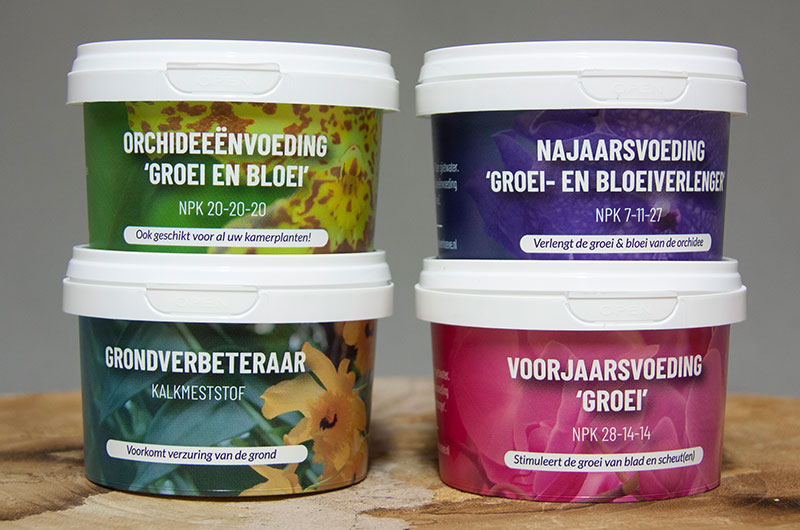
How do I care for my Dendrobium phalaenopis?
Dendrobium phalaenopsis is the embodiment of the feeling people have when thinking about orchids, namely a tropical plant native to warm and humid regions. Dendrobium is native to large parts of Asia and Australia, including India, Thailand, and New Zealand. Dendrobium phalaenopsis is stylish, fashionable, and classic. That makes this orchid suitable for any interior.
Light
In a bright, but shaded spot, but no direct sunlight.
Temperature
Dendrobium phalaenopsis loves temperatures between 15 and 25 degrees Celsius.
Water
This orchid should not be overwatered. It is sufficient to water it once every seven to nine days. Water dendrobium phalaenopsis only once its soil is almost dry.

Fertiliser orchidee
- wice per month, feed dendrobium nobile our special orchid fertiliser ‘Groei en bloei’. Dosage: one level teaspoon per one litre of water. In February, May, and September, sprinkle one level teaspoon of ‘Grondverbeteraar’ (soil improver) once over the potting mix. The orchid does not require fertiliser from November up to and including January. Both products are sold in our shop.
Spraying flower buds
The humidity in a home can be low during the winter and summer months. Spray the smallest buds daily to prevent them from drying out and not flowering.
Soil
It is important to replant dendrobium phalaenopsis once every three to four years in orchid potting mix. For dendrobium phalaenopsis, Pantropica has put together a well-aerated mix of bark, coco, and peat. This mix is available at our shop.


After flowering
Once Dendrobium phalaenopsis has stopped flowering, the flowers will automatically fall of the stem. The orchid will generate another stem from a new shoot. This will take approximately eight to twelve months.
Tip for repotting
Dendrobium phalaenopsis can be repotted in a larger pot if the orchid’s roots are healthy. However, if the roots are soft and/or decayed, it is recommended to remove those parts and to repot the orchid in the same pot. Tearing/dividing is also an option once dendrobium phalaenopsis has grown beyond the edge of the pot. Divide a single plant into two plants, at the most. Next, place these plants in a pot of the same size.
